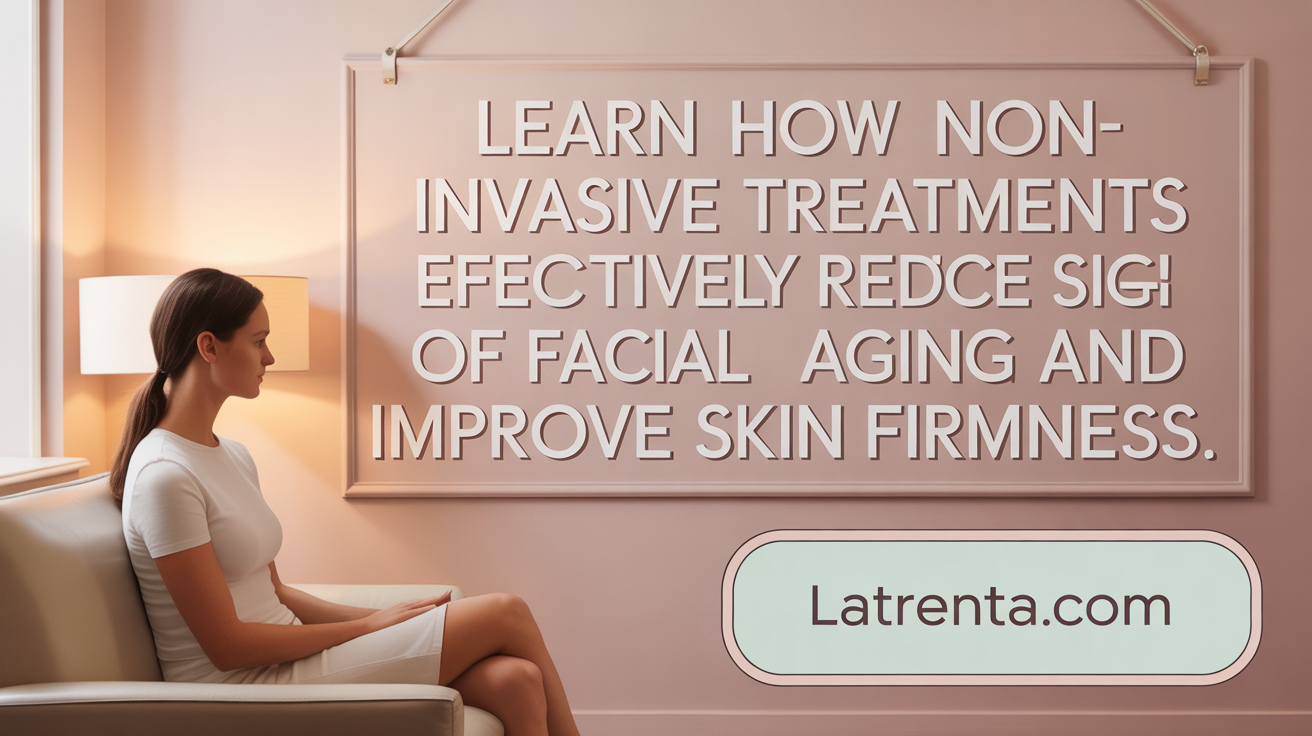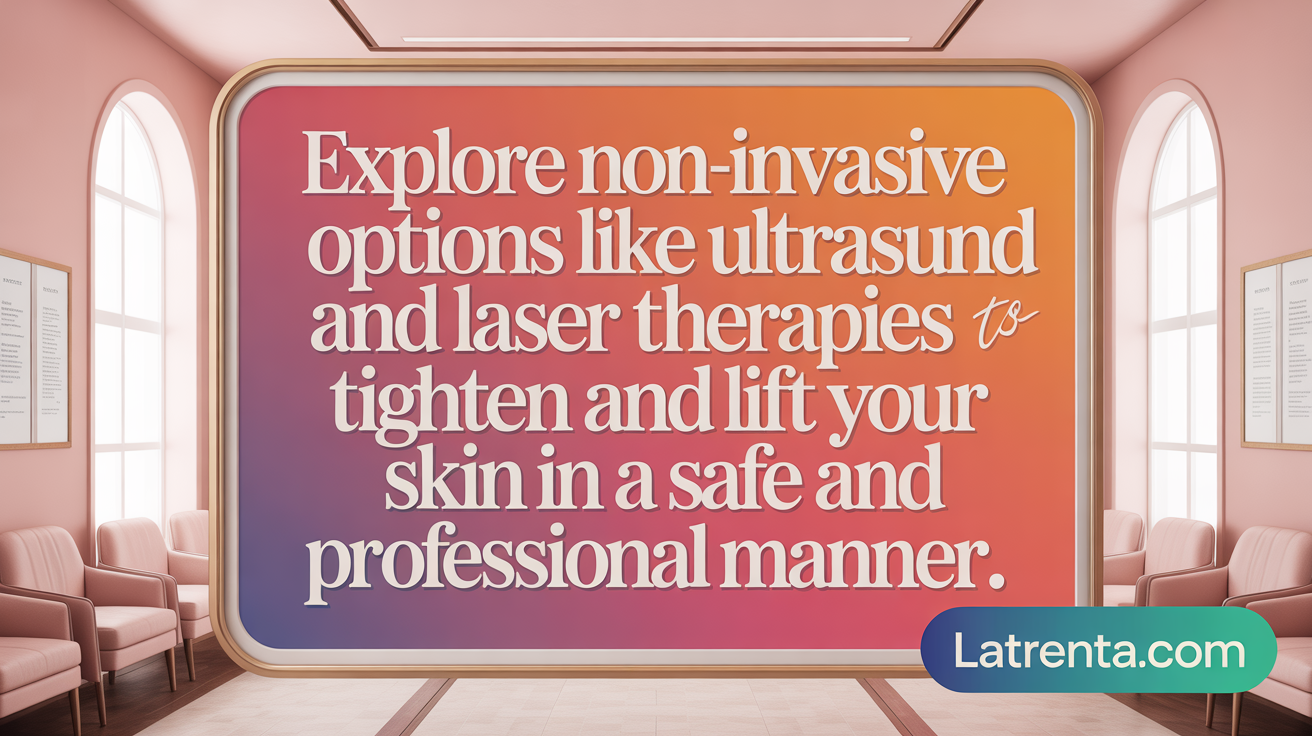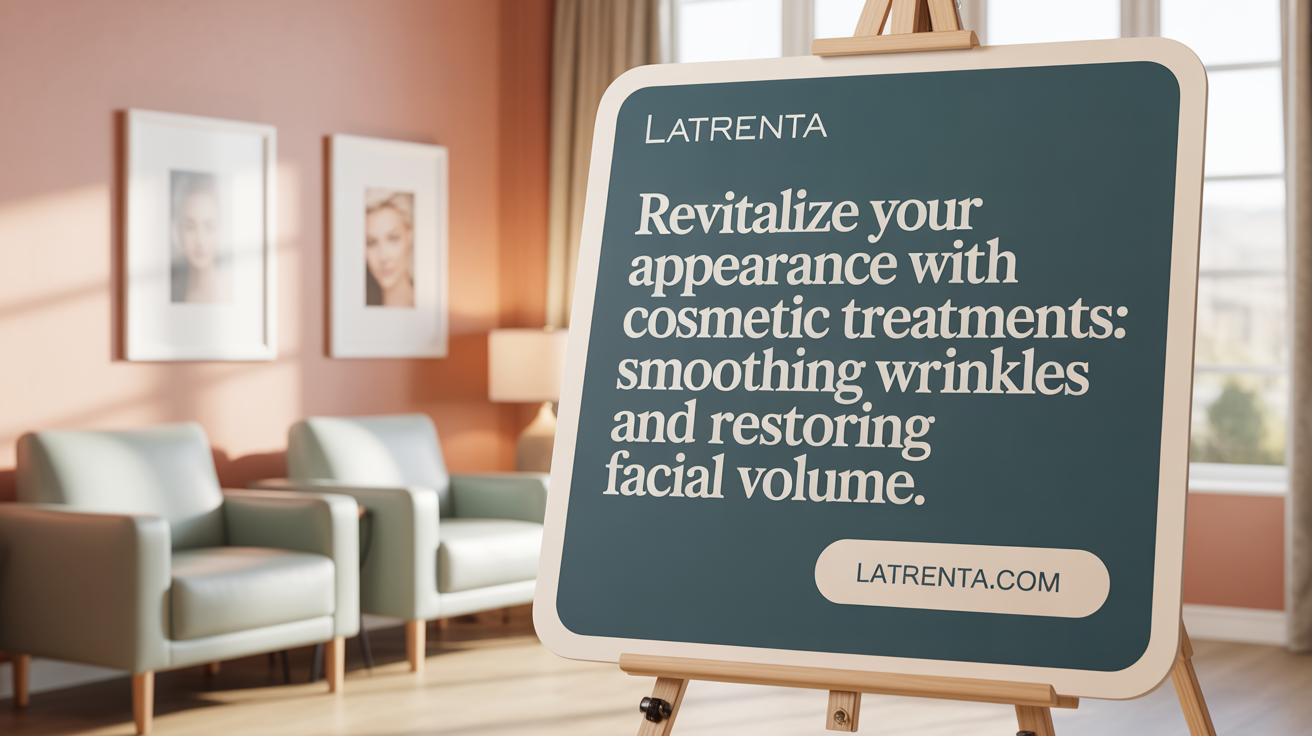Understanding Non-Surgical Facial Aging Solutions
Facial aging is a natural process marked by signs such as wrinkles, sagging skin, and volume loss. While surgical facelifts have long been considered the gold standard for reversing these effects, many seek less invasive alternatives with shorter recovery times and fewer risks. This article explores a comprehensive range of non-surgical and minimally invasive treatments designed to reduce and reverse the visible signs of facial aging. We delve into how these options work, their effectiveness, who benefits most, and how lifestyle and skincare support lasting results.
How Non-Surgical Treatments Can Address Facial Aging

Can facial aging be reversed?
While completely reversing facial aging is not achievable at present, many treatments can significantly enhance skin firmness and diminish sagging. Non-invasive options like creams containing retinoids and hyaluronic acid, along with facial exercises and collagen supplements, may promote skin elasticity gradually.
Professional interventions such as laser resurfacing, ultrasound skin tightening, and microneedling are designed to stimulate collagen production, which helps lift and tighten the skin for more noticeable improvements. These treatments work by encouraging the body’s natural regenerative processes, leading to smoother, firmer skin over time.
Maintaining healthy habits like protecting your skin from UV rays, eating a balanced diet, and building muscle can further support skin resilience. It’s important to consult a board-certified dermatologist, who can assess individual needs and recommend personalized, effective strategies for managing signs of facial aging.
While these options can improve appearance and boost confidence, they may not fully restore a youthful look for severe laxity. Combining such treatments with good skincare routines and professional advice offers the best chance to slow down and improve facial aging signs.
Non-Invasive and Minimally Invasive Skin Tightening Techniques

Can sagging facial skin be tightened without surgery?
Many individuals seeking facial rejuvenation ask whether sagging skin can be improved without undergoing traditional surgery. The answer is yes, in many cases. Non-invasive treatments like ultrasound, radiofrequency, and laser therapies can effectively tighten loose skin, especially when the sagging is mild to moderate.
Non-surgical skin tightening technologies such as Thermage and Ultherapy utilize advanced energy forms—radiofrequency and ultrasound, respectively—to penetrate into the deep skin layers. This energy heats the tissue, stimulating the production of collagen and elastin fibers, which are crucial for skin firmness and elasticity.
For example, Ultherapy delivers focused ultrasound energy, lifting and tightening the skin around the neck, chin, and brow area. Thermage, on the other hand, uses radiofrequency waves to achieve similar effects, improving skin texture and reducing fine lines.
Another minimally invasive option, RF microneedling, combines tiny needle punctures with radiofrequency energy to promote collagen growth and skin tightening. Some treatments in this category, such as FaceTite, use small probes under local anesthesia to directly target deeper tissues, providing more noticeable results with minimal downtime.
While these non-surgical methods are effective for many and come with advantages like little to no recovery time and natural-looking results, they tend to be most suitable for mild to moderate sagging. Severe skin laxity might still require surgical procedures for long-lasting and dramatic improvement.
In sum, many options exist today that can tighten the skin without the need for traditional face-lift surgery, offering a safer and less invasive path to a more youthful appearance.
Injectables and Liquid Facelift: Restoring Volume and Softening Wrinkles

What are the best non-surgical alternatives to a facelift?
For those seeking to reverse signs of facial aging without undergoing surgery, several nonsurgical options are available. Botox and other neuromodulators work by relaxing facial muscles, effectively reducing dynamic wrinkles and fine lines, especially around the eyes and forehead. Dermal fillers, made from substances like hyaluronic acid, calcium hydroxylapatite, or poly-L-lactic acid, restore lost facial volume, plump lips, fill wrinkles, and improve facial contours.
The liquid facelift is a popular approach that combines these injectables to rejuvenate the face. It can immediately lift and smooth certain areas, giving a more youthful appearance without surgery. Techniques like laser resurfacing, radiofrequency microneedling, and ultrasound treatments (e.g., Ultherapy) also promote collagen production, tightening skin and enhancing texture, especially in mild to moderate cases.
The choice of treatment depends on individual goals, skin laxity, and overall facial aging patterns. Consulting a qualified aesthetic specialist can help determine the best tailored approach for effective, natural-looking results.
How do Botox and dermal fillers work?
Botox and other neuromodulators like Dysport and Xeomin function by temporarily blocking nerve signals to specific muscles. This inhibition prevents muscle contractions that cause dynamic wrinkles, such as crow’s feet, frown lines, and forehead creases. Effects typically last 3 to 4 months and cost around $466 per session.
Dermal fillers contain substances like hyaluronic acid, which attracts water to add volume, or more durable options like calcium hydroxylapatite. Fillers are used to restore lost volume in cheeks, lips, and under the eyes, as well as to fill nasolabial folds and other facial wrinkles. Results last about 6 to 12 months, with a typical cost of around $694 per treatment.
What is a liquid facelift?
The liquid facelift involves injecting dermal fillers and neurotoxins to address multiple signs of aging simultaneously. It can lift, contour, and soften wrinkles, providing significant improvements in a minimally invasive manner. While it doesn’t tighten loose skin as effectively as surgery, it offers immediate results with little to no downtime.
However, these results are temporary and generally last between 12 and 18 months, necessitating repeat treatments to maintain the appearance. The procedure usually involves minor swelling or bruising, which subsides within a few days.
How long do injectables last, and what are their costs and side effects?
- Botox/Dysport/Xeomin: Last about 3 to 4 months, costing approximately $466 per session. Side effects are mild and include temporary redness, swelling, or tenderness.
- Dermal Fillers: Last 6 to 18 months, with a cost around $694 per treatment. Common side effects include swelling, bruising, and minor discomfort.
Limitations compared to surgical facelifts
While injectables and nonsurgical treatments can significantly improve the signs of aging, they have limitations. They are most effective for mild to moderate aging signs and do not provide the long-lasting, dramatic results of a surgical facelift. Surgical procedures can remove excess skin, tighten underlying tissues, and produce results that last a decade or more.
In summary, non-surgical methods are excellent for maintenance, minor corrections, and early aging signs. For more pronounced sagging and loose skin, a surgical facelift remains the most effective solution.
Candidate Suitability and Safety Considerations for Non-Surgical Anti-Aging Treatments

Who is an ideal candidate for non-surgical anti-aging procedures?
Ideal candidates for non-invasive and minimally invasive anti-aging treatments generally exhibit mild to moderate signs of aging. These may include fine lines, slight skin laxity, or small volume losses in the face. Typically, individuals between their late 30s and early 50s are most suited, as their skin still maintains good elasticity.
Good overall health is crucial, and candidates should be non-smokers with no significant medical conditions that might impair healing or increase risks. They should understand that non-surgical options tend to produce subtle or gradually appearing results, which require multiple sessions and ongoing maintenance to sustain.
It is important for candidates to have realistic expectations, recognizing that these treatments offer improvements rather than dramatic transformations. They should also be committed to follow-up treatments, as effects generally last between 6 months to 2 years depending on the procedure.
Consultation with a qualified, board-certified dermatologist or cosmetic specialist is key to assessing individual skin condition, discussing goals, and determining the most appropriate treatments. An individualized assessment ensures safety and helps tailor procedures to achieve natural-looking results while minimizing risks.
Ultimately, the best candidates are those seeking enhancement rather than dramatic change, willing to adhere to a maintenance plan, and prepared to trust experienced professionals for safe and effective outcomes.
Expected Outcomes, Costs, and Side Effects of Non-Invasive Procedures
 Non-invasive skin rejuvenation treatments typically produce noticeable improvements in skin appearance. Patients often see reduced wrinkles, enhanced firmness, and a more refreshed, youthful look. These procedures are favored for their minimal downtime and mild side effects, which usually include temporary redness, swelling, or bruising.
Non-invasive skin rejuvenation treatments typically produce noticeable improvements in skin appearance. Patients often see reduced wrinkles, enhanced firmness, and a more refreshed, youthful look. These procedures are favored for their minimal downtime and mild side effects, which usually include temporary redness, swelling, or bruising.
The costs of these treatments can vary significantly. For example, ultrasound treatments like Ultherapy may cost around $2,300 per session, while microneedling with radiofrequency generally ranges from $200 to $800 per session. Laser treatments, such as Fraxel laser resurfacing, may cost between $1,600 and $2,600. Usually, multiple sessions are recommended to achieve optimal results, which can add up financially.
Results from non-invasive procedures tend to develop gradually over several weeks to months and can last approximately 2 to 3 years, depending on the treatment and individual skin factors. While these methods effectively improve skin texture and elasticity and reduce mild to moderate aging signs, they are not permanent. Maintenance sessions are often necessary to sustain improvements.
Patient satisfaction generally remains high when treatments are performed by qualified professionals who adhere to safety protocols. Side effects are expected to be mild and temporary, with most patients recovering quickly. However, treatments might not be suitable for severe skin laxity, which often requires surgical intervention for more pronounced and lasting effects. Overall, non-invasive approaches provide safe and effective options for those seeking facial rejuvenation without surgery.
Supporting Facial Aging Reversal Through Skincare and Lifestyle
What lifestyle tips and skincare routines support the reversal or reduction of facial aging?
Supporting the aging reversal process hinges on consistent skincare practices and healthy lifestyle choices. Daily sun protection is crucial; using broad-spectrum SPF 30 or higher, wearing sun-protective clothing, and seeking shade reduce UV exposure, which is a major factor in skin aging.
Incorporating active skincare ingredients can make a substantial difference. Serums with retinoids, vitamin C, and peptides promote collagen production, improve skin texture, and brighten the complexion. Gentle cleansing, regular moisturization with ingredients like hyaluronic acid and ceramides, and exfoliating with glycolic or lactic acids help remove dead skin cells and stimulate renewal.
Lifestyle habits also play an essential role. A nutrient-rich diet high in antioxidants supports skin health, while staying well-hydrated aids in maintaining skin elasticity. Adequate sleep allows for skin repair, and managing stress can prevent skin dullness and premature aging.
Avoiding smoking and limiting alcohol consumption are critical, as both can accelerate skin aging by damaging collagen and impairing cellular repair.
Long-term commitment to these routines yields significant benefits. Consistency ensures ongoing protection and renewal, effectively slowing the appearance of fine lines, wrinkles, and sagging. When combined, skincare and lifestyle habits foster healthier, more resilient skin, helping to preserve a youthful appearance over time.
Navigating Your Options for Facial Rejuvenation
While no non-surgical treatment can fully replicate the dramatic and long-lasting effects of a surgical facelift, a diverse range of minimally and non-invasive procedures exist that effectively reduce visible signs of facial aging for those with mild to moderate concerns. Combining treatments such as injectables, skin tightening technologies, and resurfacing therapies, along with disciplined skincare and healthy lifestyle choices, can help maintain a youthful appearance with less downtime and fewer risks. The key to optimal results is working with qualified professionals to create a personalized plan that balances expectations, safety, and maintenance. With ongoing advances in technology, non-surgical options continue to expand, providing safe, effective pathways to refreshed, firmer skin without going under the knife.
References
- Many ways to firm sagging skin - American Academy of Dermatology
- Nonsurgical Facelift: Options for Wrinkles, Firmness, and More
- 5 Minimally Invasive Ways to Reduce Your Wrinkles
- The Non-Surgical Facelift - Reverse Facial Aging Without Surgery
- Facelift Results Without Surgery: Do The Alternatives Come Close?
- How to Reverse the Signs of Aging Without Surgery
- 3 Minimally Invasive Skin Treatments That Reverse Collagen Loss
